Globalization has brought us many things. Cheap t-shirts. Exotic houseplants. The odd proliferation of yoga studios and trendy sushi joints.
But on the downside, it’s also brought a whole lot of homogeneity. Combine the popularity of Western fashion sensibilities with the ease of mass-manufacturing from concentrated production centers, and you get a world that wears jeans pretty much wherever you go. You can also enjoy Christmas in China, witness Japanese brides and grooms in “traditional” black and white Western dress, listen to Michael Jackson in Baghdad, and find all sorts of other idiosyncrasies that would have been unthinkable even fifty years ago.
One of the more annoying effects of all this is that it has the potential to make the world far more boring. You can find pop music in every dance club on the planet, Irish pubs in Peru, and by-the-numbers Hollywood action flicks everywhere you go. On the one hand, there’s never been more cultural exchange than today, especially since digital sharing is revolutionarily instant; but there’s never been more of an apparent drive toward the convergent evolution of everything look the damn same.
Take, for instance, skyscrapers. Sure, many of them look different. But if you’re going to build something tall, on a standard city block that’s square-shaped to begin with, chances are you’re going to end up with a big, boring rectangle that looks just like everything else.
Unless you’re Azerbaijan, where the combination of potentially-hubristic levels of oil wealth and the desire to make its mark on the world stage have produced this:
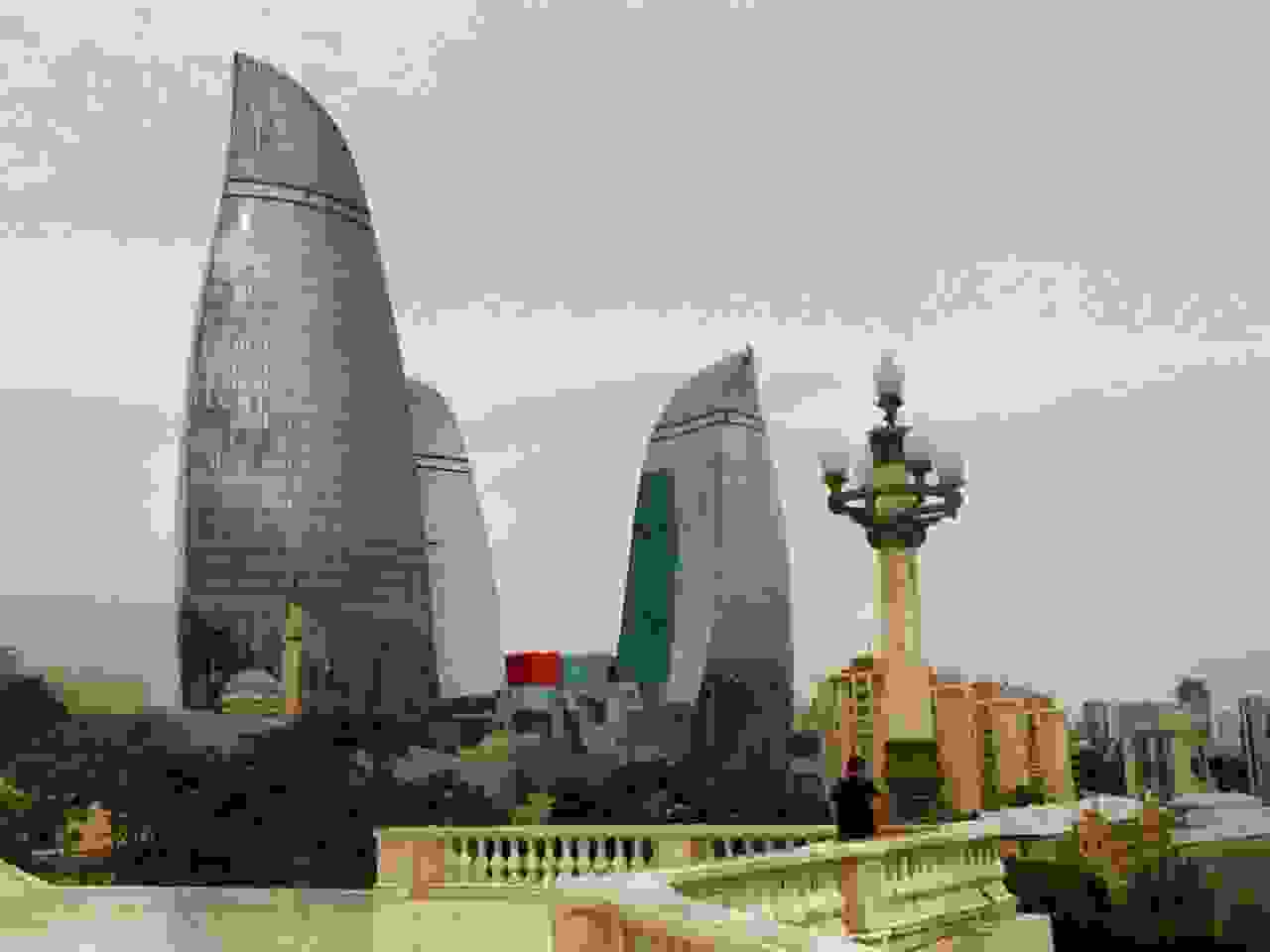
Those are the Flame Towers of Baku, in all their flickery glory.
Finished in 2012 for a total of $350 million, these 180ish-meter towers now loom over the city as a brand-new symbol of the newly renovated Baku, shimmering in the distance like a conspicuously shiny sports car parked in the driveway, instead of tucked away in the garage.
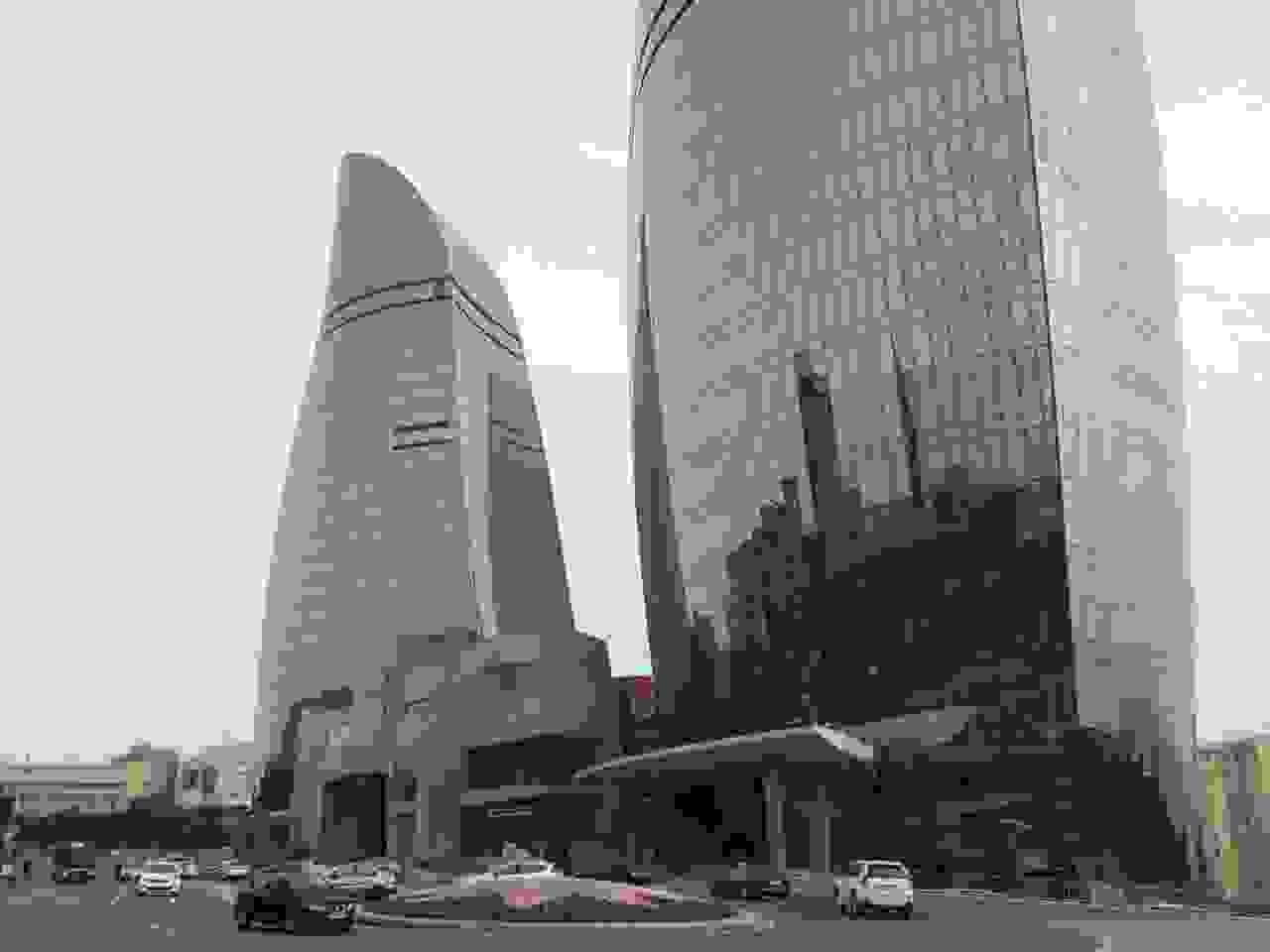
It can’t be a coincidence that they were placed so prominently on a hilltop, visible from all over the city center, right at the end of the waterfront boulevard where Baku citizens hang out all the time. If you’re trying to show off how cool you are, center stage is where you go.
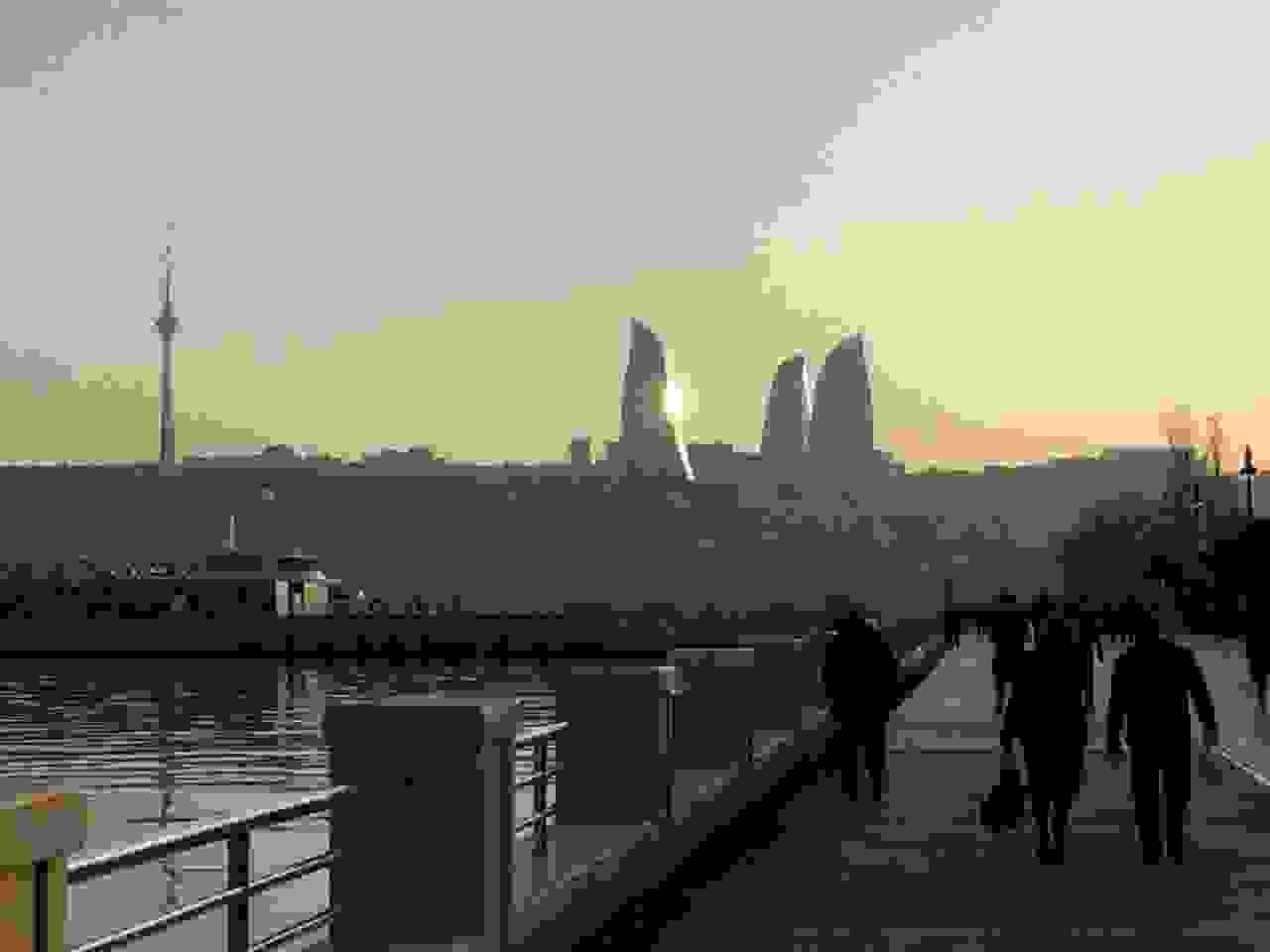
They’re certainly not without their detractors, though. Some say the towers are over-the-top, gaudy showpieces that scream for attention and might as well have their price tag displayed on the side for all to see. And sure, they’re not subtle.
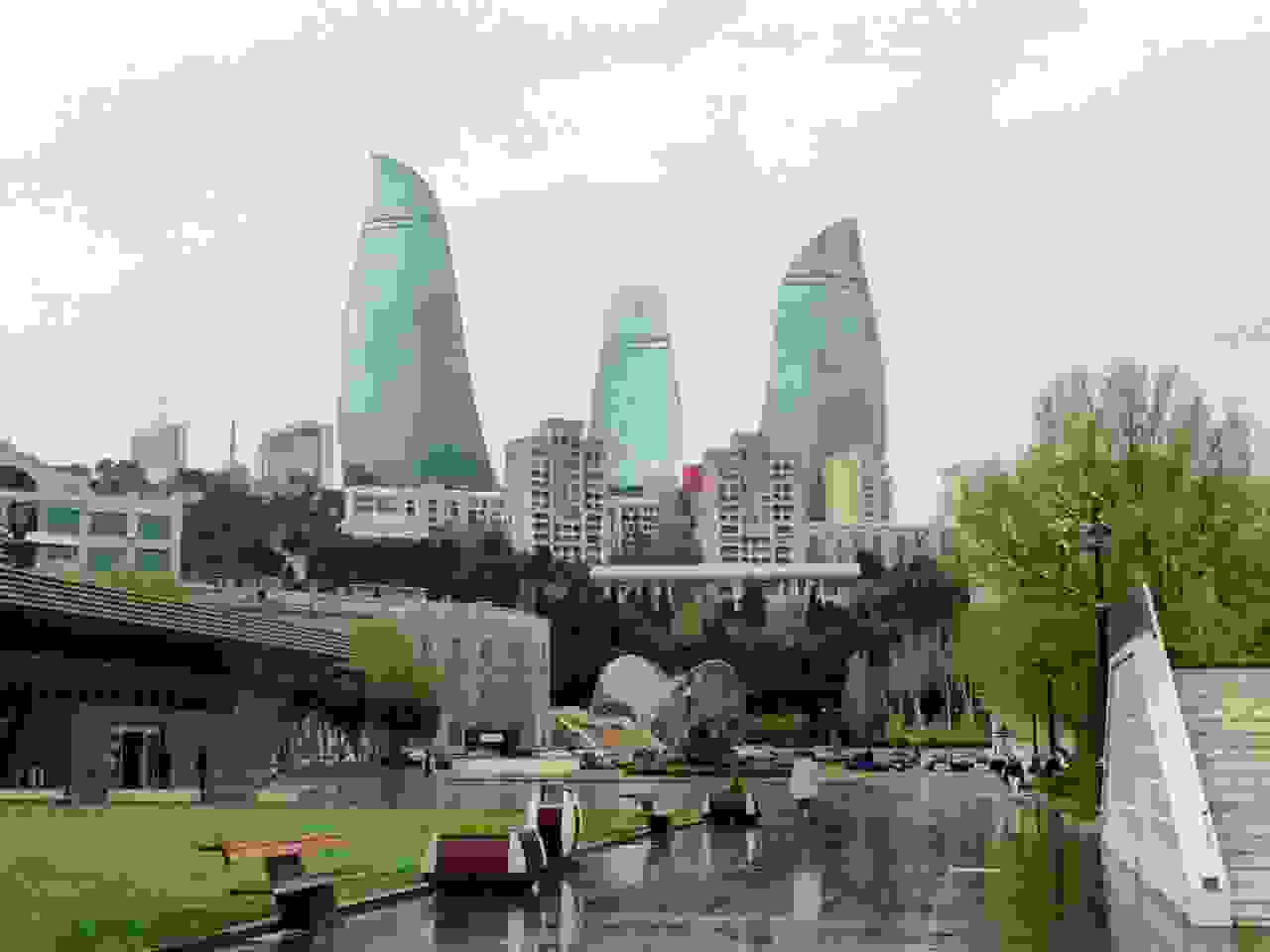
But I’ll put in a vote for their defense. Because if there’s anything that life should be, it’s interesting. And as gaudy as you might think they are, it can’t be said that they look just like everything else out there.
The glass, sure. But the flickering shape of the Flame Towers probably isn’t something you’ve seen elsewhere––and, though not particularly well-known, it’s also culturally relevant.
Though not present on the flag, Azerbaijan’s national emblem prominently features a flame, and fire has been a national symbol of Azerbaijan for centuries. Even the name Azerbaijan roughly translates to “land of fire,” and with all the burning gas vents and exploding mud volcanoes and everything else that’s creeping up out of the surface all the time, it’s easy to see why. The architects of the Flame Towers simply chose to reflect that.
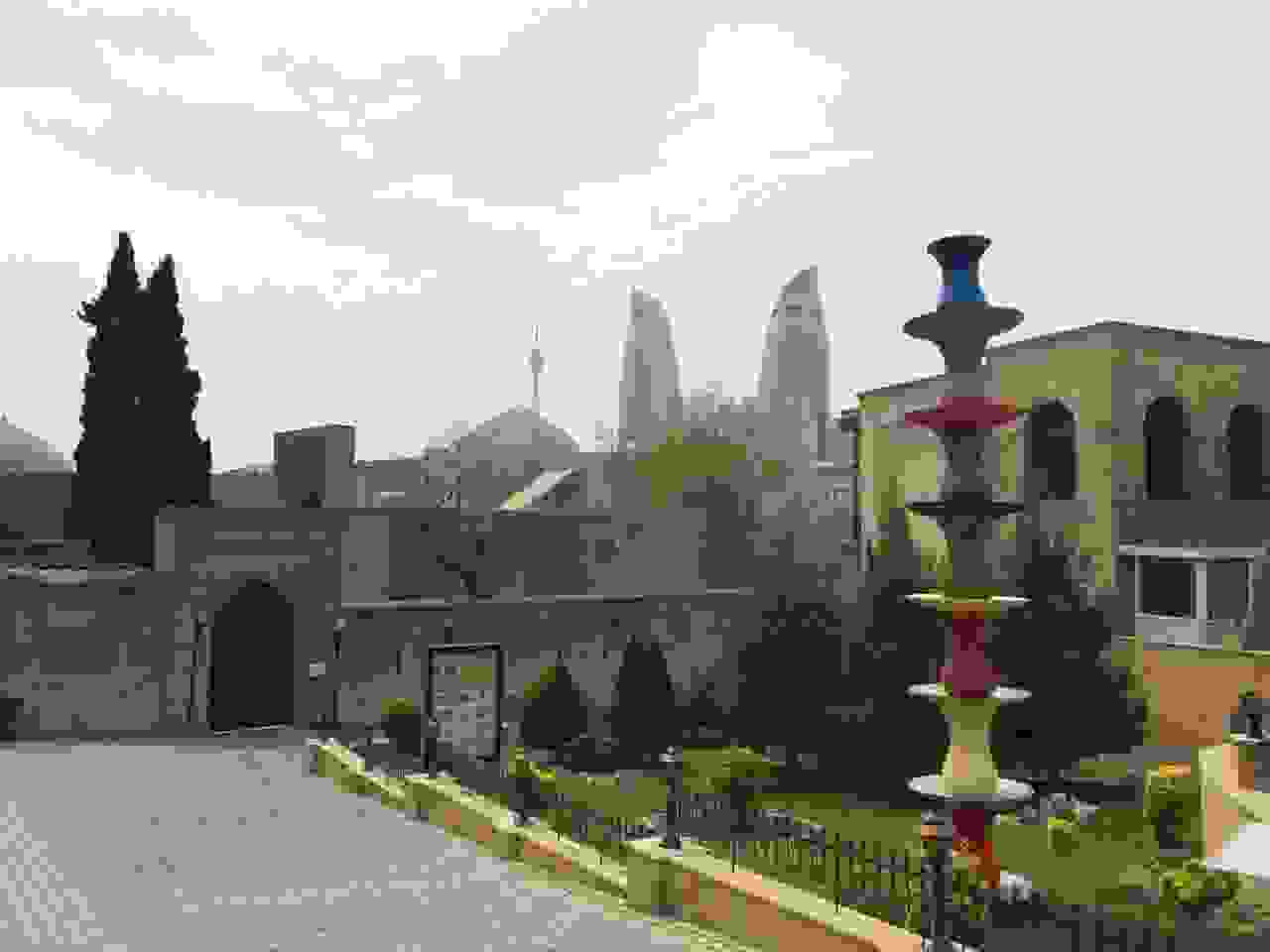
With tiny buildings, it’s easy to maintain traditional design. Materials, shapes, decorative elements and other details are a lot easier to experiment with when you’re only building a few stories tall. But the higher you go, the more sense it makes to build a giant, vertical rectangle out of concrete and steel. It’s structurally sound, and it won’t fall down. And it’s also easy to leave it mostly blank, because people need windows to see outside, and nobody can see anything all the way up there anyway.
And it’s certainly true that plenty of other buildings in Azerbaijan are built this way, with several looking like they’d be right at home in Las Vegas, or basically wherever. They might look nice, but you wouldn’t necessarily think Azerbaijan when you look at them.
But with the Flame Towers, they took a cultural element that’s been a prominent symbol of their history and economy for a long time, and built that symbolism right into the cityscape.
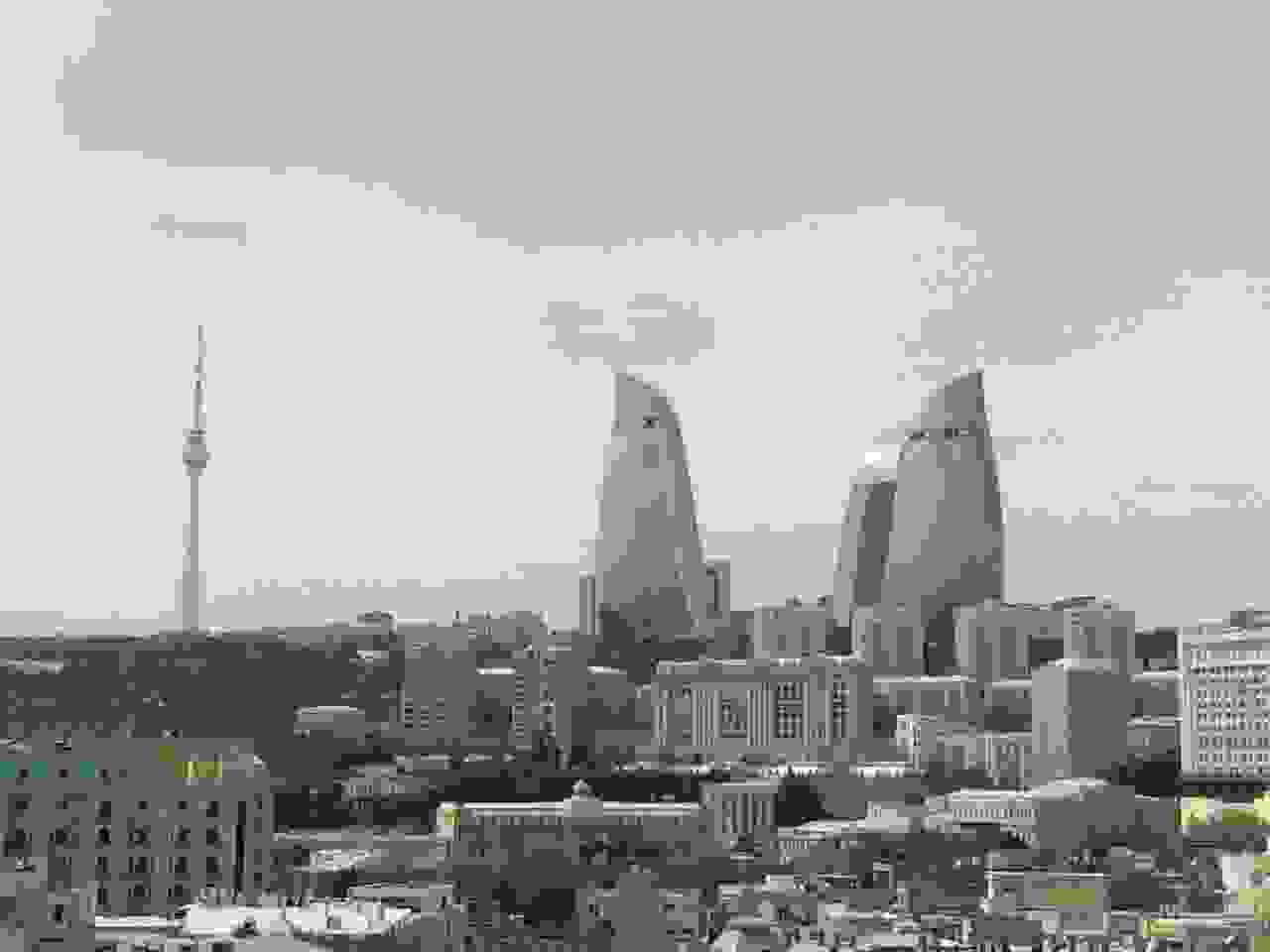
This is part of the reason I’m also a big fan of Taipei 101, the centerpiece of Taiwanese architectural marvels, which looks indisputably as though it belongs exactly where it is, in East Asia. Despite the fact that it’s one of the world’s tallest buildings, they took the time to pack the design with cultural elements, as well as an immediately recognizable kind-of-pagoda-esque silhouette that could not possibly be mistaken for a German building, for example.
Though it’s somewhat more subtle, the same is true of the Flame Towers. You have to be told that Azerbaijan means “land of fire” for the buildings to make sense as more than just a fancy attempt at showing off, but after you know what’s going on, they’re at least a culturally relevant attempt at showing off.
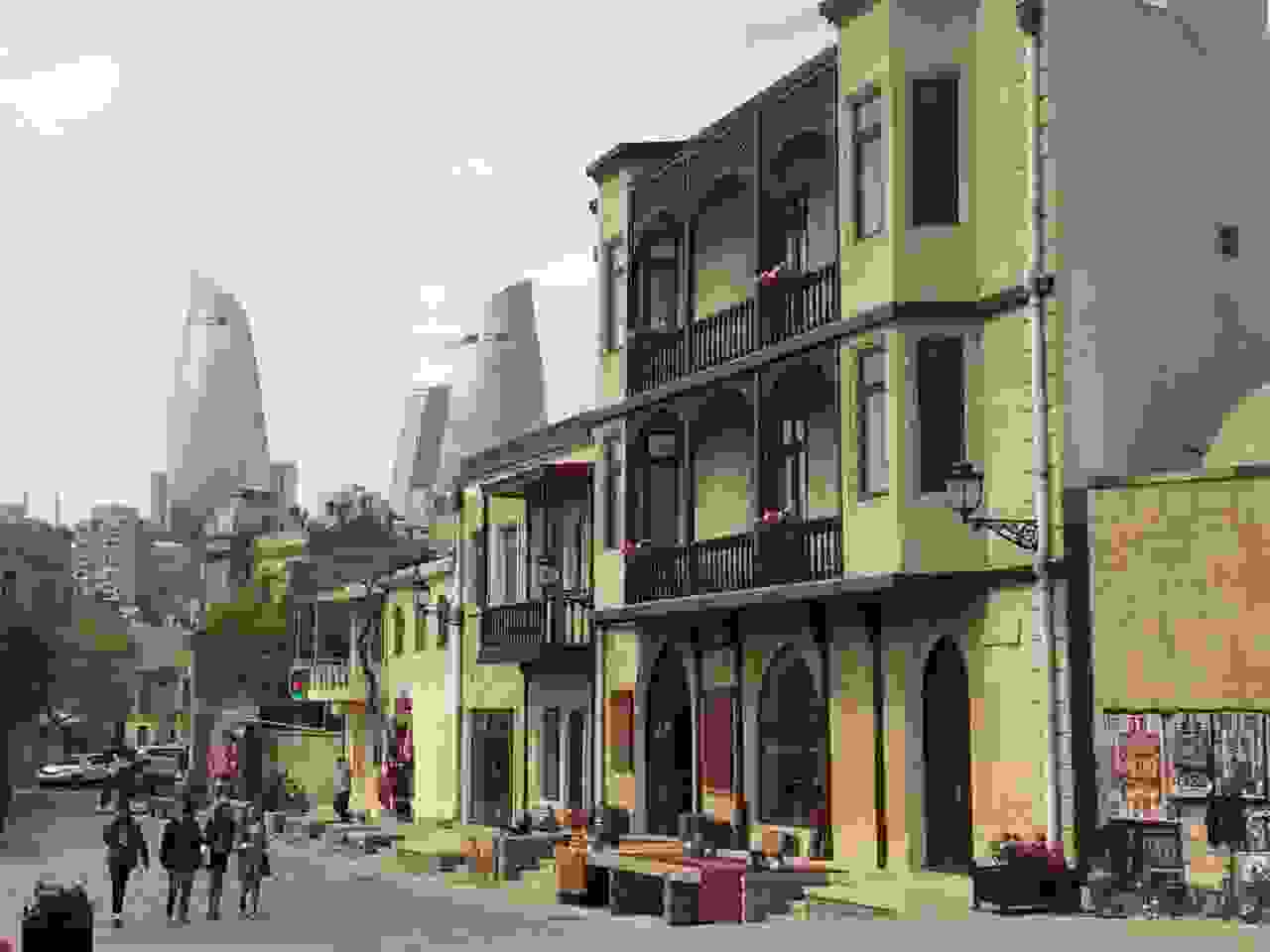
And that’s why I like them. No matter how modern a city might be, no matter how much the residents love jeans and t-shirts and iPhones and whatnot, there’s still room for this sort of culturally unique architectural monument. And if architecture can still have a local flair, so can everything else.
So I don’t think we’re doomed to a future of cultural convergence. Culture just doesn’t seem to work that way. It yearns for its own identity. Sure, everyone loves pizza, but something tells me we’re not going to get stuck in the predicament of everything looking and feeling the same all the damn time.
To an extent, sure. And perhaps it’s something to lament. But monuments like the Flame Towers remind me that we need not despair quite yet at the decline of global diversity. We just need to get a little creative.
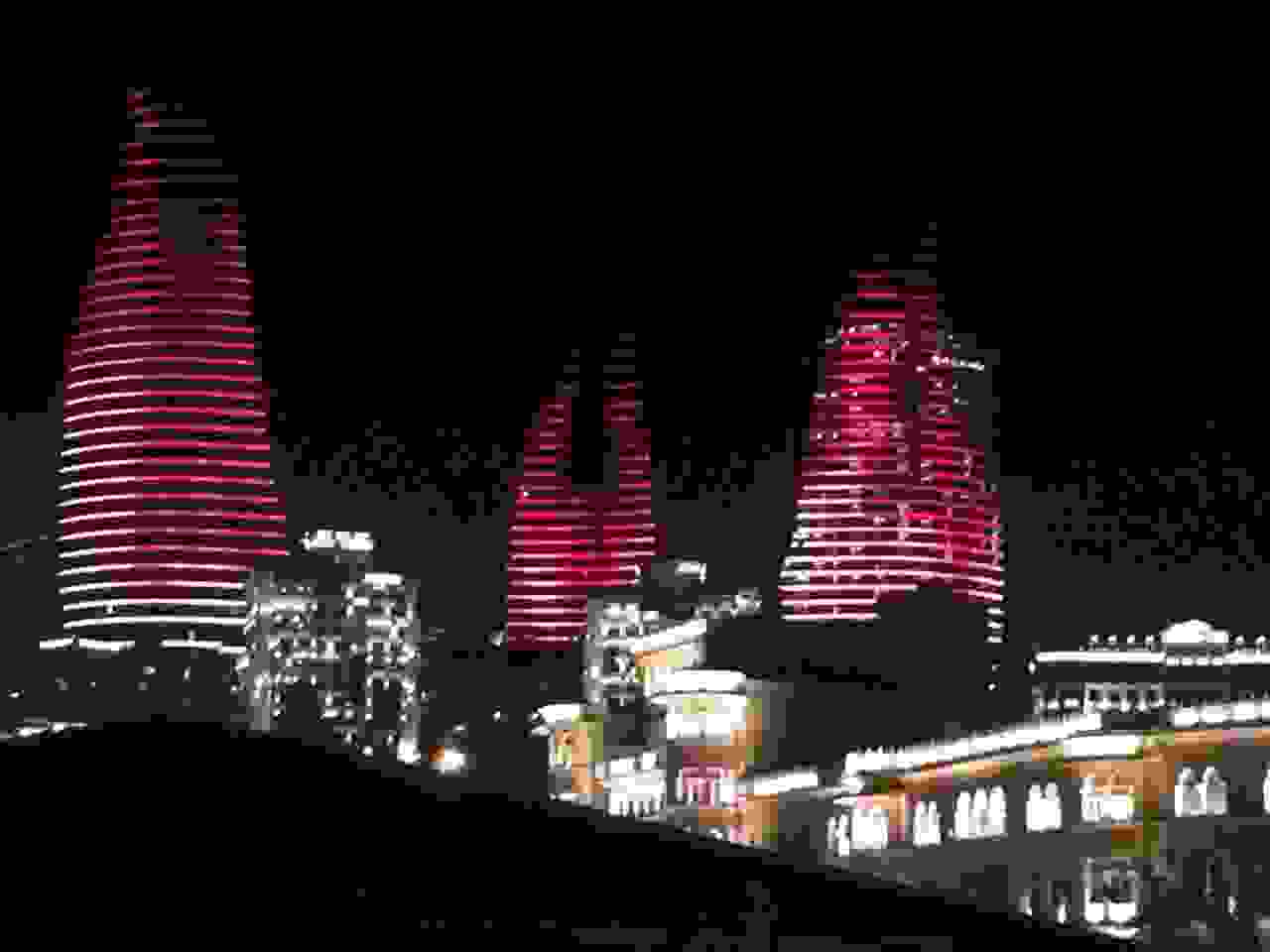
So the next time you’re designing a wondrous monument, think as loftily as the architects who produced the Hanging Gardens, the Taj Mahal, or the Eiffel Tower. We’ll all be happier for it.


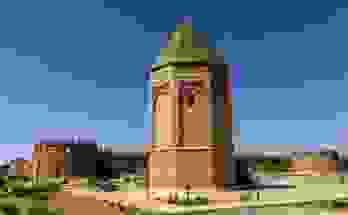

I agree with you. They are bizarre but I like them and it makes me want to go see them for myself. I think often when things like this are built the people who clearly remember the ‘before’ find them difficult to accept but they soon become a much loved part of the skyline. There are some notable exceptions, the horrendous town clock in my home town being one of them – http://www.stuff.co.nz/nelson-mail/opinion/columnists/naomi-arnold/8749496/Ugly-building-cries-out-for-a-mural-makeover – it must be almost 40 years now and we still all hate it. However it has no cultural relevance to our town or our nation so that was the architects biggest mistake – there is nothing for us to feel proud of. But in a world that is increasingly been filled with generic brands who build generic buildings I appreciate unique and well thought out architecture on the rare occasions that I see it.
That…is a weird building. Decaying concrete stains are never a good idea. Just for people out there who might not know.
Cultural relevance may not be enough. Our local statue of Quetzalcoatl is culturally relevant. It also looks like a giant pile of poo.
http://m.sfgate.com/bayarea/article/San-Jose-sculpture-described-as-waste-3156625.php
I like the flickering flames on the flame towers. Our fire station has a similar though vastly smaller sculpture and it’s neat.
After looking up that image, I have to say that you are incredibly correct.
Fashion over function. It’s a completely western concept that has been exported to even the poorest parts of the world. Global debt allow such luxuries, albeit at teh expense of the average man.
When I saw these (ridiculous, wonderful) towers in 2013, word was that they were totally empty—another bit of symbolism. Do you know if anyone’s actually moved in yet?
They have businesses in the ground floors, so I’m pretty sure there are people in there…though I didn’t actually bother to ask anyone.
Not pictured: Subtlety.
lol